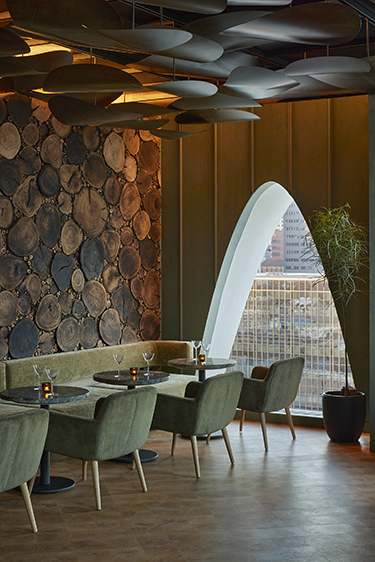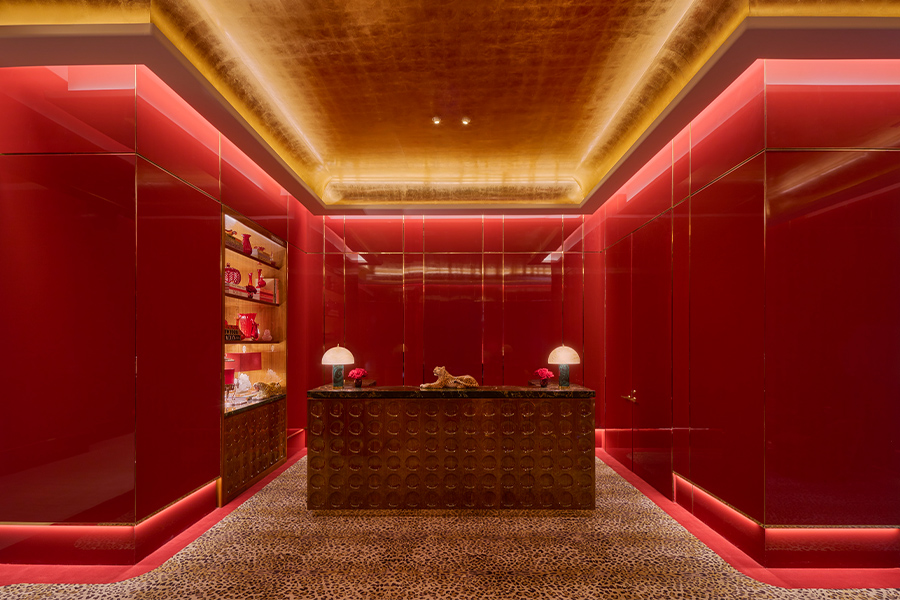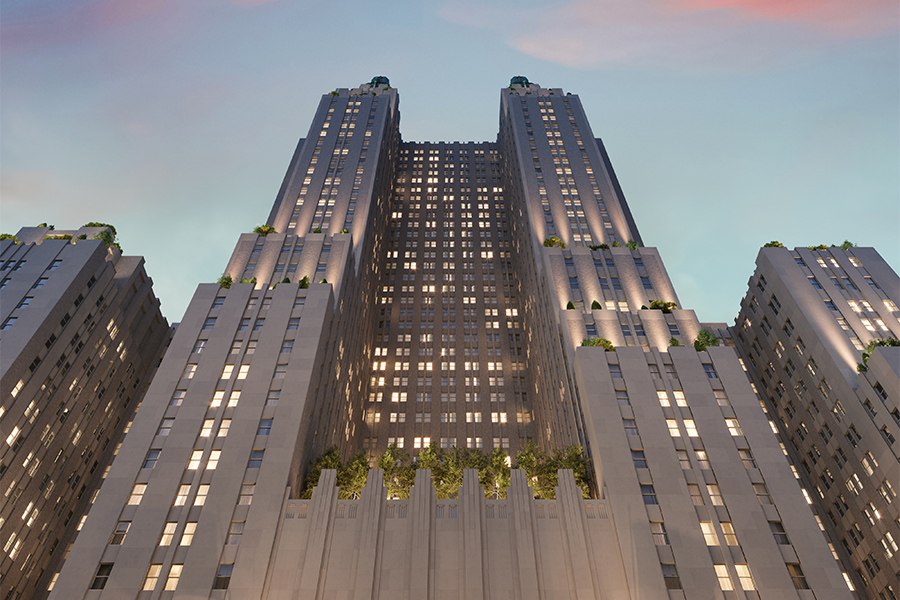When it comes to environmental stewardship, the hospitality and real estate industry can be slow to innovate. Yet, a playbook has emerged in recent years that supports a sustainable future. In 2022, for example, the Marcel Breuer Pirelli building in New Haven, Connecticut opened as the LEED Platinum-certified, Dutch East Design-crafted Hotel Marcel, touting its own eco-friendly bonafides that set a new standard for hotels.

Stellar Jay stars a wall inspired by the Yakisugi technique of preserving wood
Taking up the mantle is the LEED Gold-certified Populus hotel in Denver, the brainchild of Urban Villages, a company whose philosophy is rooted in balancing economic needs with environmental concerns.
To create what they deem the first carbon-positive hotel in the U.S. required a powerhouse team, including architecture firm Studio Gang, Pittsburgh studio Wildman Chalmers Design in partnership with New York-based interior architect of record Fowler, and hotel operator Aparium Hotel Group.
The audacious project was “a leap of faith,” says Urban Villages president Jon Buerge, “where we knew what we wanted to accomplish but we didn’t yet know how we were going to get there.” Add to that an industry that sees innovation as risky and Buerge had his work cut out for him. “We’re facing a climate emergency,” he says, “and that requires all industries to think of creative solutions and have the courage to do things differently—and do things outside the norm.”
To make the biggest impact possible, Urban Villages embarked on an intensive process of calculating the carbon footprint of every material that went into the building, including using a low-carbon concrete mix that helped reduce the hotel’s footprint by 30 percent. Buerge also wanted to retain the best talent possible. “We knew we couldn’t do this on our own,” he says. “We had these big, bold goals, and to achieve them, we had to put together the best of the best.”

From Little Owl coffee bar, a sculptural grand staircase ascends to the second floor meeting spaces
Enter Gang, a MacArthur Fellowship recipient for her commitment to environmental stewardship. Using nature as inspiration, the hotel’s façade takes cues from Colorado’s native aspen trees and the striking white, curved panels create a distinctive window design that recalls the eye-shaped marks found on the bark of the trees while also optimizing natural light and reducing heat gain.
Wildman Chalmers was challenged with crafting interiors that matched the pristine building but were also warm and welcoming to guests. While the outside was informed by the forms of the trees, “we wanted the inside to reflect the sensory experience of nature,” says principal and design director Heather Wildman. The journey begins on the first floor, home to Pasque restaurant and Little Owl coffee bar, and extends to the second-floor meeting space up through the 265 guestrooms to the 13th-floor rooftop.

Pops of nature-inspired hues, including mossy green and copper, appear in the Commons lounge on the second floor
Mimicking a forest floor, the richly layered lobby mixes brown hues and textures to add softness to the concrete floor (stained brown and topped with exposed aggregate that resembles pebbles), while materials were chosen that would age with the hotel. Take the distressed wood slats on the ceiling, which were sourced from reclaimed wood snow fencing in Wyoming. Local beetle kill pine has a new life as wall shingles behind the check-in desk—made from a naturally felled cottonwood tree—as well as guestroom headboards and elements in Pasque.
The lobby, too, features a striking ceiling installation made from Reishi, an eco-friendly leather alternative derived from mushroom mycelium. “I’m a minimalist,” says Wildman, “but I love to maximize on subtlety.”
The tree metaphor carries into the guestrooms, with dark corridors (symbolizing the trunk of the tree) that transition to light and bright rooms, which are framed by the scalloped windows. “Your eye is drawn to these great views and shapes,” she says. Guestroom carpets, made from compostable recycled material, also nod to the forest floor, while artwork includes pressed flowers in glass frames that create shadows from the windows.
Crowning the hotel is Stellar Jay. Here, guests feel as if they’re nestled under a forest canopy thanks to saturated green and blue hues in the main dining area and a lush mural that crawls along the walls in the private dining room.

A mural depicting tree branches in Stellar Grove, the private dining room in Stellar Jay, adds to the forest-like feel of the hotel
Buerge knew for a truly sustainable hotel, operations had to be as important as the design, implementing a landfill diversion program that converts food waste into compost that is then returned to local farms. (Thus far, Populus has diverted 14 tons of food waste from landfills.)
Further, the hotel is investing in regenerative farming practices as well as tree planting and reforestation efforts in partnership with the U.S. Forest Service and other agencies. Most notably, the hotel teamed up with the National Forest Foundation on its One Night, One Tree program, which plants a tree for every night’s stay, contributing over 20,000 new trees in 2024, with the goal of planting more than 55,000 trees in 2025.
“Because we’ve done everything with purpose, guests will feel good just by virtue of staying here,” explains Aparium Hotel Group CEO and founder Mario Tricocci. The goal, he points out, is for guests to leave feeling inspired, curious, and motivated.
“Our greatest impact with Populus is not going to be through the building itself,” adds Buerge, “but in how we influence and encourage the industry to think differently and to change.”
This article will appear in HD’s April 2025 issue.











